
Please, support PV!
It allows to keep PV going, with more focus towards AI, but keeping be one of the few truly independent places.
It allows to keep PV going, with more focus towards AI, but keeping be one of the few truly independent places.
AVCHD maximum image quality settings and testing
-
I hope so. I know what needs to be tested out. Hopefully people test this out when we get new PTool.
1. Double the default GOP sizes. Check the average bitrate reaching overall bitrate parameter value.
2. Try GOP3 & AQ4 on 24p. See I-frame to B-frame has roughly between 4:1 and 3:1 ratio in size.
3. Try GOP6 & AQ4 and see if GOP6 has bigger I-frame than GOP3's.
4. Check for the cadence anomaly at AQ4.
After passing the tests, it's ready for image quality testing.
-
For what it's worth, we're getting great results with gop12. Shadow grain equal (or close to equal) to what we were getting with gop3 with 3.61.
-
New settings following a different approach ...
I left the Frame buffer size and Encoder frame limit settings unchecked.
Instead I've mutliplied the Top and Bottom Bitrate settings.
24H x4 = 88Mbits ... Top/Bottom Bitrate settings mutliplied by 4.
24L x3 = 48Mbits ... Top/Bottom Bitrate settings mutliplied by 3.
FSH x2 = 32Mbits ... Top/Bottom Bitrate settings mutliplied by 2.
GOP12.
AQ 4.
From preliminary tests I would say these settings work fine and seem to be STABLE - they record and playback in camera with class 6 and class 10 cards without problems.
Although I have to say I've only tested Kae's codec torture chart by now. Have to check real world scenarios soon.
At 24H I've recorded the chart for 3 minutes in Ex Tele mode and everything went fine.
Streamparser shows even cadences with all settings (24H, 24L and FSH (50i) respectively... I haven't checked other modes yet).
Attached streamparser screenshots showing 24H at 88 (75) Mbits and 24L at 48 (46) Mbits.
The cadence looks the same also with longer records (the screenshots show samples of 1 minute).
Please check the settings and let me know your findings... thanks!
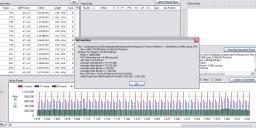
 sete_24h.jpg1266 x 615 - 265K
sete_24h.jpg1266 x 615 - 265K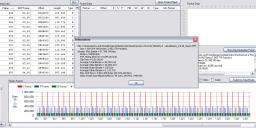
 sete_24l.jpg1267 x 615 - 251K
sete_24l.jpg1267 x 615 - 251K
 sete.zip579B
sete.zip579B -
I did some more testing and 42 mb/sec 720p is not stable with the new settings for very bright scenes with ETC. I tried everyone of the new Quant settings for 720p and they would all fail after about 20 seconds with ETC and a very fast shutter speed.
I have revised my settings to use 38 mb/sec and Quant = 3 for 720p. That fixed the ETC issue even for my slow Class 6 eye-fi card. Quality looks the exact same so I really don't believe that I am missing anything.
I am still using 42 mb/sec and Quant 4 for 1080p and that has no issues even with the class 6 card. I plan on testing the 1080p mode to see at what level it becomes unstable. -
@mpgxsvcd
"I am still using 42 mb/sec and Quant 4 for 1080p and that has no issues even with the class 6 card. I plan on testing the 1080p mode to see at what level it becomes unstable."
Can you post your latest settings? We've been having problems with clips over 2 or three minutes long; have you shot any longer clips with these settings? -
@towi - We're testing with your settings right now. Getting good, long takes (10 min) at high iso with the low setting, but no joy (long takes at high iso) with the high... Will keep messing around and give better notes in the AM. - additionally, are you doing much high iso testing?
-
@towi at al: We've been testing with these settings and can't seem to get the files to span. Each time, on high or low, the file stops at 4.29gb. Then, strangely, the next file recorded by the camera is 2 numbers higher. So if 0002.mts went to 4.29gb, the next file willl be 0004.mts. Very, very strange. Quality is great, but for long takes, we're not happening yet....
-
does anyone have footage of i frames above 8.4 with no macroblocking? i can't seem to find the right settings..
-
Try GOP12 and 88Mbps bitrate. it'd give close to 9Mb I-frame.
-
@towi, I tried your settings (with top/bottom settings), and the cadence problem is still there. I've had similar findings relating to shooting the death chart, the cadence issue doesn't arise sometimes. Also the motion itself looks very, very odd to me.
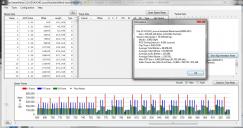
 AQ4topbottomx3.jpg1299 x 683 - 274K
AQ4topbottomx3.jpg1299 x 683 - 274K -
Can someone point me at stable settings with better image quality than stock? I lost track of where we are right now. Is it beneficial to use hack settings right now or am I better off with stock settings?
Is it safe to use 44mbps/GOP12/AQ3 or 4? (safe i.e. -> improves image quality without cadence, motion or other bitrate/frame issues). -
@cosimo_bullo
Here are the settings I am currently using. The 720p is pretty much maxed out for 100% stability. The 1080p one could go higher but I am starting to doubt whether that is necessary or not.
 seth Stable 38 mb-sec 720p 44 mb-sec 1080p.zip407B
seth Stable 38 mb-sec 720p 44 mb-sec 1080p.zip407B -
mpgxsvcd, can this hold up on the "death chart"?
Also, does the 1080P and 720P span files correctly?
Also, I see you are not using the FB1, FB2, and FL settings. Normally some have chose 2X the default for these values.
Has it been determined they are not needed?
I'm currently using 1080 24P at 66mbps with 3X values for FB1, FB2, and FL.; AQ=4
I have not performed a torture test yet and I still need to check if it spans.
I'm usinf Sandisk Extreme Class 10 32GB.
One thing for sure v3.62d with 66mbps AQ=4 looks freaking unreal!
The shadow detail and lack of macrobloacks in the shadows is amazing!
I'm blown away with the quality!
-
@cosimo_bullo
My procedure is to make a setting that shows an even cadence in streamparser to start with.
I then record the infamous torture chart about 30 seconds in 24H, 24L and FSH and look at the streams.
When the streams look okay, I record longer clips (2 or 3 minutes).
When the settings seem to be okay I continue testing under real world conditions (motion, gradients etc.).
Typically I do use low and mid ISO. I also check high ISO but actually not with long clips (2-3min max for testing purposes mostly).
This morning I've also tried to simply double everything (so 44Mbps at 24H and top/bottom BR settings doubled).
With the 88/48/32Mbps settings posted above as well as with the new 44/32/32Mbps settings from today my camera records without issues up to 4.29GB file size.
The files don't span ... either way the settings I use. So I suspect this is not an issue of high bitrate but a general issue with PTool 6.2 (with 6.1 at 52Mbit/GOP6 the files span fine on class 6 and class 10 SanDisk).
I do like the improved IQ of the new autoquantizer, especially as 50i is now more than just usable... this is why I will stay with the PTool 6.2 firmware for the time being. The settings posted above didn't crash my camera by now... so I will continue to test them (limited time to test right now, unfortunately).
@Stray
odd. Attached 4 screenshots.
First two show a relatively still scene (backyard with trees)
1.) 8 minutes shot with the 24H/88Mbps setting posted above (average bitrate actually utilized: 68Mbps)
2.) 13 minutes shot with more moderate 24H/44Mbps settings from today (average bitrate actually utilized: 42Mbps)
Both streams show an even cadence all over the clip length.
the next two are from a scene with motion (passing traffic).
3.) 16 minutes record with the 24L/32Mbps setting from today (average bitrate actually utilized: 30.7Mbps).
Cadence looks good up to ~ 6150 frames. Then the cadence looks weird, however the actual footage looks good (shows no artefacts or strange behavier that is).
4.) 6'30'' record with 24H/88Mbps - even cadence all over the clip.
Interesstingly all clips I've shot by now with the "SetE" 88Mbps@24H posted above show an even cadence .. either way whether or not the scene required the codec to go at really high bitrates.
Only with lower bitrates and the 24L setting I get the uneven cadence occasionally (as in screenshot #3).
I have no idea why … this is just how it is.
Now, it is very well possible that something does not work with these settings, of course... but by now I have not discovered issues with my camera and my cards (except, of course, the files don't span).
Clips also playback fine in camera (at 24H sometimes I have to switch off/on the camera to play the files, but this is a non-issue for me personally).
Did you load my settings or did you create your own? In the case of the latter... maybe you forgot to check or uncheck a setting?
Also, after loading a new firmware it's mandatory to reformat the card in camera before you start to record something ... but I am sure you already know that.
As to "odd looking motion" ... how do you view the files? In my book it's pretty useless to judge 24p files on a computer monitor. Too, when you playback MTS files there might be any kind of artefacts and "shutter" issues due to the processor intensive "on the fly" decoding of the application used for playback.
To judge IQ and especially motion this is what I do: I import my files into Avid and eye up the movies on a monitor that displays native 24p (at 24Hz).
At least you should transcode to QT with a high bitrate (ProRes, DNxHD or so) as those files do not stress the processor that much.
To me the footage looks good (admittedly this statement is only based on limited tests … but I will keep on testing with my "SetE" 88/48/32Mbps setting).
My camera is set to PAL.
Cards used are SanDisk cl.6 and cl.10.
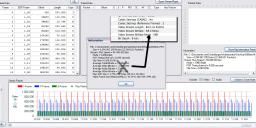
 01_sete_88mb_8min.jpg1268 x 612 - 291K
01_sete_88mb_8min.jpg1268 x 612 - 291K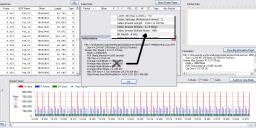
 02_setf_44mb_13min.jpg1267 x 618 - 297K
02_setf_44mb_13min.jpg1267 x 618 - 297K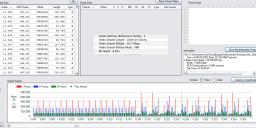
 03_setf_32mb_16min.jpg1264 x 607 - 249K
03_setf_32mb_16min.jpg1264 x 607 - 249K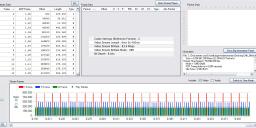
 04_sete_88mb_6min.jpg1272 x 619 - 241K
04_sete_88mb_6min.jpg1272 x 619 - 241K -
-
the version posted here on July, 26th?
-> http://personal-view.com/talks/discussion/comment/7635#Comment_7635
-
@Towi I took your settings and just set 24H lower to 66MB and did a 3x multiple on its top/bottom instead. So yep, its different, guilty as charged there. Incidentally, I don't know if you saw it but Vitaliy said in another thread to leave those top/bottom settings alone as they're fine as they are. As for the motion, yes definitely, the monitor I'm playing back on mainly is going to cause me some grief I know (60 Hz). However the other monitor while not being 24 native is running at a good multiple (72Hz) but this looked odd on both monitors. I think its more likely to be a problem with the codec in WMP (as you say, stutter and artifacts could also be down to the app not coping with the high consistent bandwidth, I have an i7 box so its not likely to be the hardware performance). I do usually check with VLC too, but once I saw the cadence problem re-emerge I must admit I just quit trying with it and switched to creating an AQ1 patch that I'd be happy with (as I'm shooting tomorrow). Also, indeed, yep you're right I should transcode them in future, that is when I go back to a higher AQ.
Your results are really interesting though, maybe the higher bitrate idea does help solve the cadence problem. Will watch how it all develops. As you say though the cadence problem seems to be shot specific and hard to predict. So its pretty difficult to know when you've solved it tbh as the following day you may find a shot that will make it happen again.
As it is for me at the moment I'm running AQ1 with settings of 66/48 for 24H and 24L and 32 for FSH. Very stable, very even cadence, lovely image and good motion (not too shabby looking even on the 60hz monitor). I understand that yeah, the bit rate will drop with some scenes moreso than it would have done with a higher AQ (and I'll lose detail in areas of the image), but I know when thats going to happen and can deal with it if I have to deal with it. I did record a shot today that averaged at 50676kbps and it plays back flawlessly on this PC. I don't like to have to go through the transcoding stage much, I will when I have to of course, but I'm not going to have it as an accepted and permanent fixture of my workflow. These settings, (and this maybe the case for AQ2 as wel,l when I can do tests again), allow me to work with the files natively, preview them natively etc, and this immediacy is important to me. In short I'm jumping off the testing myself for a bit, but will watch the progress here so I don't fall too far behind as things change. -
@Towi, you say the footage looks good even with the uneven cadence, I've felt much the same about it too. Have you exported stills before and after the cadence goes whacky to check it ? I'm using Sandisk Extreme Pro for everything.
-
It seems to me that if the image looks the same even when the bitrate drops in some frames, then the bitrates while they are high aren't contributing to image quality. Why not just drop the overall bitrate so they are all as low as the bitrate during those frames when it is lower?
Chris -
@cbrandin - We're seeing a big enough difference between 44 and 88 in 3.62 to justify the higher bitrate (I realize this is somewhat subjective, and that's fine). Also, I'm hearing that the lower settings are not helping towi's cadence results, and that 88 is actually giving a more solid cadence. Is that correct?
-
well... if that's correct then good! Are you seeing the improvement at 88M mostly with motion rendering? I can see how that might work.
Chris -
Only with a LOT of motion (like a cattail plant blowing hard in a breeze with a 500th shutter) for the most part. The real improvement for me is the quality of the grain/noise in shadows and less banding in out-of-focus color areas. We just did a couple of tests to exemplify this, though I think some will say we're crazy, as the results are subtle. But to me this is about subtle refinement. The GH1 sucked before the hack. The GH2 was great, and now it's getting better and better. One little example: we just reshot on the GH2 a shot in title sequence that was otherwise all RED (pre MX, but very clean). It was projected last week to a fairly large audience, and NO ONE noticed the replaced shot, not even people who were there at the original shoot! That was with 3.61 at 110mbps. 3.62 at 88 looks even better. That, to me, is what this is all about.
-
@cosimo_bullo
Interesting... I would have thought that relatively low increases in bitrate would have achieved that. Actually, though, 88M does allow the QP to be improved 2x over 44M. It just goes to show that testing is always necessary - it's impossible to anticipate the end result of all these parameters - even when you know what they do. Maybe you might want to try this: Go to manual QP settings and set the "Quantizer Value for 1080" to 8, and leave the bitrate at 44M. This is the quality equivalent to AQ4 at 88M, but applied to the 44M bitrate. I wonder how it will work out? The risk is that motion encoding may suffer - but I don't know for sure.
Chris -
@Stray
"24H lower to 66MB and did a 3x multiple on its top/bottom instead"
I thought exactly about the same setting. Will check it …
66Mbps would be fine for me… I've just pushed to 88Mbps as it seems to produce even cadences and quite stable high bitrates.
Also with the high setting I-Frames don't go really low in motion … only the P- and B-Frames get larger.
With lower Mbps settings I-Frames go sgnificantly lower in motion.
Okay, this is how AVC codecs are supposed to work according to "cbrandin". And it makes sense.
But it doesn't necessarily mean that it's good thing … AVC codecs are certainly not the holy grail of video codecs :-)
"I don't know if you saw it but Vitaliy said in another thread to leave those top/bottom settings alone as they're fine as they are"
Now … I really have no glue about all this. I am just a user, absolutely no engineer or so.
So Vitaly is certainly perfectly right.
On the other hand "cbrandin" told us by default the GH2's I-Frames are limited to 8MB.
To improve IQ you have to "enable" larger I-Frames by altering the Frame buffer sizes and Encoder frame limits.
Multiplying FBS and EFL by 2 or 4 works - the I-Frames go well above 9MB.
But this procedure seems to be quite prone to crash the codec or at least there are issues with in camera playback and transcoding.
Raising the Top/Bottom Bitrate settings also enables larger I-Frames. They are not quite as large but I feel the camera is much more stable with these settings.
Why did I try to raise the Top/Bottom BR setts? Well, simply because a lot of people did just that with PTool 6.1 … and as a consequence we could produce stable higher bitrates. That's all actually - I just recalled the settings from PTool 6.1 …
"you say the footage looks good even with the uneven cadence, I've felt much the same about it too. Have you exported stills before and after the cadence goes whacky to check it ?"
Stills? No. I play a loop from ~ 5 seconds before the cadence changes to ~ 10 seconds after and check different areas of the scene in motion. I can't see that the noise pattern is changing nor can I see pusling or crippled image details or so…
Apparently the uneven cadences do not destroy IQ. On the other hand it's certainly not what the stream should look like … so in fact it makes me a bit nervous.
-
@cosimo_bullo
"I'm hearing that the lower settings are not helping towi's cadence results, and that 88 is actually giving a more solid cadence. Is that correct? "
yes, that's correct. As far as candence goes the high settings produced the most even streams in my tests.
Also, even with very moderate settings only based on "end user patches" there is a stream cadence issue.
This topic is closed.
← All Discussions Start New Topic


Howdy, Stranger!
It looks like you're new here. If you want to get involved, click one of these buttons!
Categories
- Topics List23,992
- Blog5,725
- General and News1,354
- Hacks and Patches1,153
- ↳ Top Settings33
- ↳ Beginners256
- ↳ Archives402
- ↳ Hacks News and Development56
- Cameras2,367
- ↳ Panasonic995
- ↳ Canon118
- ↳ Sony156
- ↳ Nikon96
- ↳ Pentax and Samsung70
- ↳ Olympus and Fujifilm101
- ↳ Compacts and Camcorders300
- ↳ Smartphones for video97
- ↳ Pro Video Cameras191
- ↳ BlackMagic and other raw cameras116
- Skill1,960
- ↳ Business and distribution66
- ↳ Preparation, scripts and legal38
- ↳ Art149
- ↳ Import, Convert, Exporting291
- ↳ Editors191
- ↳ Effects and stunts115
- ↳ Color grading197
- ↳ Sound and Music280
- ↳ Lighting96
- ↳ Software and storage tips266
- Gear5,420
- ↳ Filters, Adapters, Matte boxes344
- ↳ Lenses1,582
- ↳ Follow focus and gears93
- ↳ Sound499
- ↳ Lighting gear314
- ↳ Camera movement230
- ↳ Gimbals and copters302
- ↳ Rigs and related stuff273
- ↳ Power solutions83
- ↳ Monitors and viewfinders340
- ↳ Tripods and fluid heads139
- ↳ Storage286
- ↳ Computers and studio gear560
- ↳ VR and 3D248
- Showcase1,859
- Marketplace2,834
- Offtopic1,320







